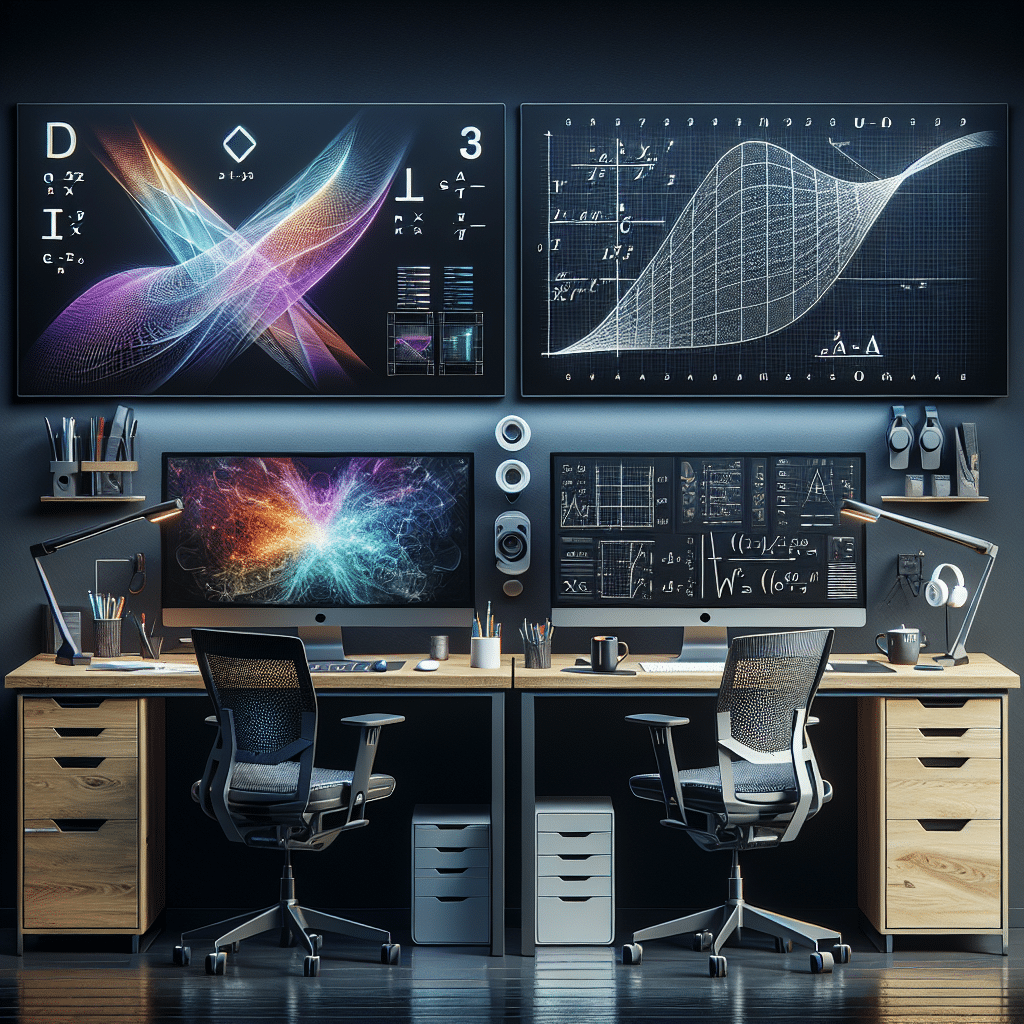Understanding Dual Monitor Setups
A dual monitor setup consists of two monitors functioning together to enhance workspace efficiency. This configuration has gained popularity among professionals in various fields, from graphic design to financial analysis. By utilizing two screens, users can expand their available digital real estate, allowing for multitasking without the clutter of overlapping windows.
Benefits of Dual Monitor Setups
-
Increased Screen Real Estate
Dual monitors provide a significant increase in available workspace. Users can dedicate one screen to their primary task while employing the second for references, communication, or additional applications. This arrangement effectively reduces time spent switching between tabs or applications, enhancing overall workflow. -
Improved Multitasking Capabilities
With two screens, you can efficiently multitask by watching a tutorial on one monitor while applying what you’ve learned on the other. This functionality is particularly invaluable in fast-paced work environments, enabling professionals to stay focused on several tasks simultaneously. -
Enhanced Organization
Having multiple screens can help in organizing workflow more coherently. Users can keep emails, chat apps, and clocks on one monitor while using the other for writing, designing, or programming. This structured organization minimizes distractions. -
Better Collaboration
In team settings, dual monitors can facilitate presentations and remote collaboration. One screen can display project files while another can be used for video conferencing. This setup allows participants to engage with materials without continuously toggling between applications. -
Reduced Eye Strain
By distributing work across two screens, users may experience less eye strain. The ability to adjust the distance and angle of two monitors can lead to more ergonomic setups, promoting a healthier work environment.
Choosing the Right Monitors
Size and Resolution
When selecting monitors for a dual setup, consider size and resolution. A common choice is to use two monitors sized between 24 to 27 inches, with a resolution of at least 1080p. Higher resolutions, such as 1440p or 4K, offer greater clarity and detail, beneficial for design and multimedia work.
Type of Monitor
There are various types of monitors available:
- IPS (In-Plane Switching): Offers better color accuracy and wider viewing angles, making it ideal for creative professionals.
- TN (Twisted Nematic): Generally more affordable and provides faster response times, suitable for gaming or casual use.
- VA (Vertical Alignment): Delivers better contrast ratios; however, viewing angles and color accuracy are typically less effective than IPS.
Connectivity
Ensure that the monitors you select have compatible connections, such as HDMI, DisplayPort, or USB-C, with your computer. If using different manufacturers, verify that your graphic card can support multiple outputs simultaneously.
Optimal Arrangement Techniques
Side-by-Side Orientation
This is the most common configuration, with the monitors placed parallel to each other. It works well for users who frequently reference materials from one screen to another, as it closely mimics the dynamics of traditional workspaces.
Stacked Orientation
In scenarios where desk space is limited, stacking monitors vertically can be an effective option. This setup allows for a compact arrangement while still offering dual displays. However, users must consider potentially limited neck mobility when using this configuration.
Angled Positioning
For a more immersive experience, consider angling the monitors towards the user. This arrangement can enhance field-of-view and ergonomics, making it comfortable to see both screens without needing to turn one’s head extensively.
Software Solutions for Dual Monitors
Utilizing the right software can enhance the effectiveness of a dual monitor setup. Here are some forms of software to consider:
- DisplayFusion: Allows for advanced multi-monitor management, including wallpaper settings, taskbars, and window snapping features.
- Windows Snap Assist: This built-in tool simplifies window management, making it easier to exchange between applications quickly.
- PowerToys: A free utility from Microsoft that provides additional features for window organization and management.
Tips for Maximizing Productivity
-
Use Shortcut Keys
Familiarize yourself with keyboard shortcuts for window management to switch between screens quickly. Tools like Microsoft’s “Snap Assist” can be customized to enhance navigation efficiency. -
Set Up Identical Monitors
Uniform monitors can minimize eye strain and provide a seamless experience. Disparities in brightness or color can disrupt workflow and reduce comfort. -
Maintain Consistent Color Profiles
For professions that rely on color accuracy, ensure both monitors are calibrated similarly. This step is crucial in design and photography fields to maintain consistency across displays. -
Position Monitors at Eye Level
To minimize neck strain, ensure that the top of each monitor is at or slightly below eye level. This alignment promotes a healthier posture during extended work periods.
Common Challenges and Solutions
Physical Desk Space
Limited desk space can be a challenge in setting up dual monitors. Solutions include utilizing monitor mounts or stands to free up desk space and create a cleaner workspace.
Compatibility Issues
Sometimes older graphics cards may not support dual monitor setups. Check the specifications of your hardware to ensure compatibility. Upgrading to a more advanced graphics card may be necessary for optimal performance.
Distraction Management
With dual monitors, distractions can proliferate. To counter this, set up designated screens for specific tasks or uses. Limiting social media and irrelevant applications to one screen can help maintain focus.
Cost Considerations
Investing in a dual monitor setup does not have to break the bank. Consider a mix of new and refurbished monitors to stay within budget while obtaining high-quality displays. Assess your needs carefully; sometimes a single larger monitor can fulfill the same functions depending on the workflow style preferred.
Conclusion
Embracing a dual monitor setup can be a transformative experience for productivity, allowing users to work smarter and more efficiently. Proper selection, arrangement, and calibration of monitors, combined with the right software, can lead to significant improvements in workflow and reduced strain on the mind and body. Whether for creative professions, corporate environments, or casual use, implementing such a setup represents a step towards achieving greater productivity.
